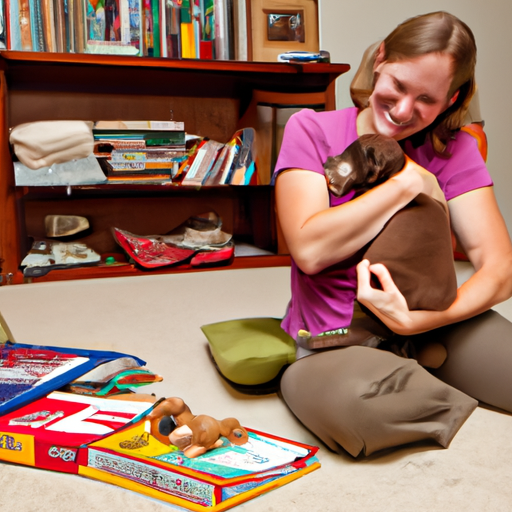Congratulations on your decision to bring a new puppy into your home! As a first-time puppy owner, you’re about to embark on a rewarding journey filled with unconditional love, adorable antics, and yes, some challenges too. But don’t worry, we’ve got you covered.
1. Prepare Your Home for the New Arrival
Think of your home through your puppy’s eyes. Everything is intriguing, and everything is fair game to be chewed on or peed upon.
-
Secure Indoor Spaces: Ensure that all dangerous substances such as cleaning supplies, medications, and toxic plants are out of reach.
-
Prepare Outdoor Spaces: Fence your yard to prevent your puppy from running into the street.
-
Puppy-Proofing: Remove small objects that can be swallowed by your curious puppy.
2. Choosing the Right Food
Your puppy’s diet is critical for their growth and development. Always opt for high-quality puppy food that’s appropriate for their breed and size.
| Breed Size | Puppy Age | Cups per Day |
|---|---|---|
| Small | 3-6 months | 1/2 -1 |
| Medium | 3-6 months | 1 – 2 |
| Large | 3-6 months | 2 – 4 |
3. Establish a Feeding and Potty Schedule
Puppies thrive on routine. Establishing a feeding and potty schedule will help them understand when it’s time to eat and when it’s time to do their business.
- Feeding Schedule: Puppies under six months should be fed three times a day.
- Potty Schedule: As a rule, a puppy can control their bladder one hour for every month of age.
4. Training Your Puppy
Training should start as soon as your puppy enters your home.
- Basic Commands: Teach your puppy commands such as “sit,” “stay,” and “come.”
- Socialization: Introduce your puppy to a variety of people, places, and other animals to help them become well-adjusted adults.
5. Regular Vet Check-ups
Regular vet check-ups are crucial to keep your puppy healthy.
- Vaccinations: Your puppy will need a series of vaccinations in the first year of life.
- Spaying/Neutering: Talk to your vet about the best time to have this procedure done.
6. Exercise and Playtime
Puppies are bundles of energy and need plenty of exercise and playtime.
- Walks: Two to three short walks a day are generally enough for most puppies.
- Playtime: Play with your puppy regularly to help them burn off energy and bond with you.
7. Dealing with Puppy Behavior Problems
Puppies are adorable, but they can also be little troublemakers.
- Chewing: Provide chew toys and discourage chewing on inappropriate items.
- Barking: Teach your puppy to be quiet on command.
8. Understanding Your Puppy’s Body Language
Understanding your puppy’s body language can help you meet their needs better.
- Tail Wagging: This usually means your puppy is happy or excited.
- Whining: This could indicate that your puppy is anxious, hungry, or needs to go potty.
FAQs
Q1: When can I start training my puppy?
A1: Training can start as soon as your puppy comes home. Start with basic commands like “sit” and “stay.”
Q2: How often should I take my puppy to the vet?
A2: In their first year, puppies should visit the vet several times for vaccinations and regular check-ups. After the first year, annual check-ups are usually sufficient.
Q3: My puppy is chewing on everything. What do I do?
A3: Provide plenty of chew toys for your puppy. If they chew on something inappropriate, redirect them to a chew toy.
Q4: How much should I feed my puppy?
A4: The amount of food your puppy needs depends on their size, breed, and age. Check the feeding guidelines on your puppy food or consult with your vet.
Hopefully, this guide has helped you feel more prepared for your new puppy. Remember, every puppy is unique and will come with their own set of challenges and rewards. Enjoy this special time with your new furry friend!



